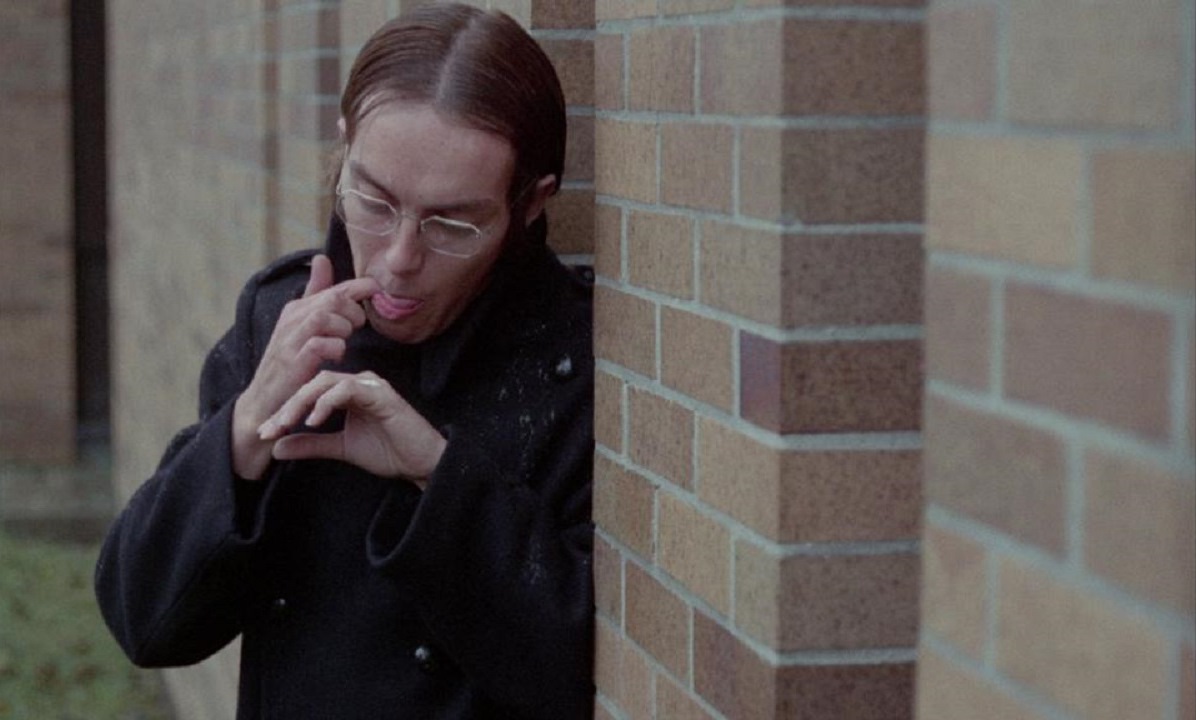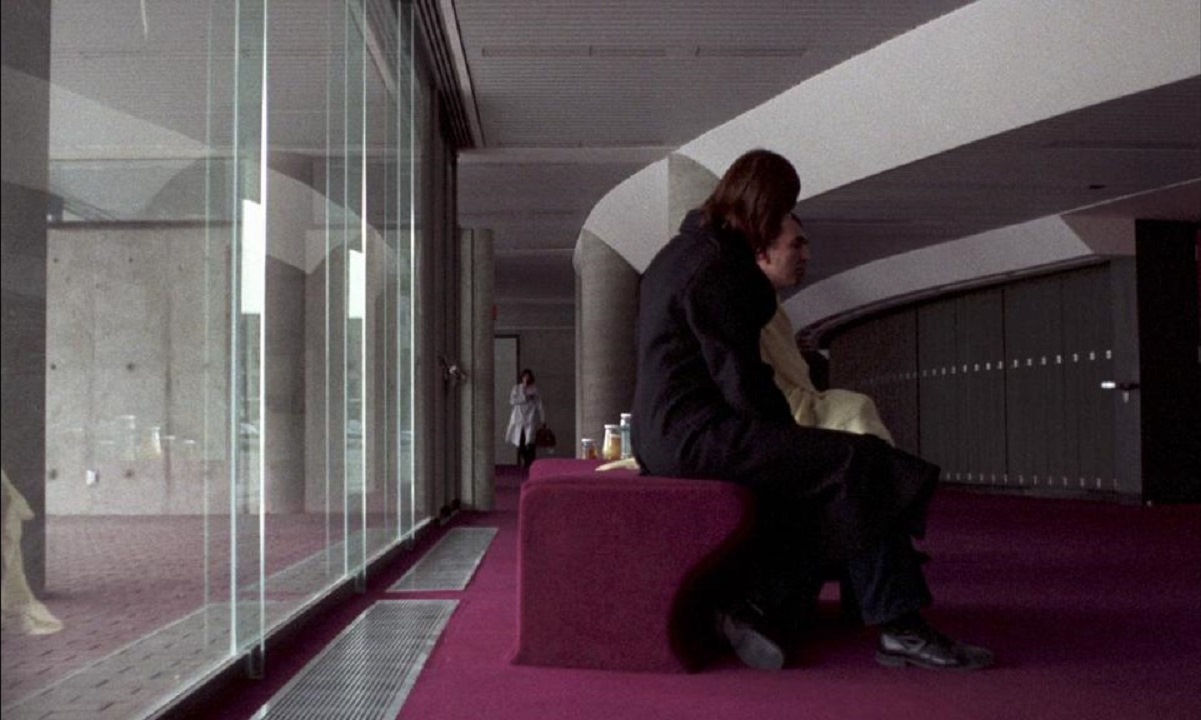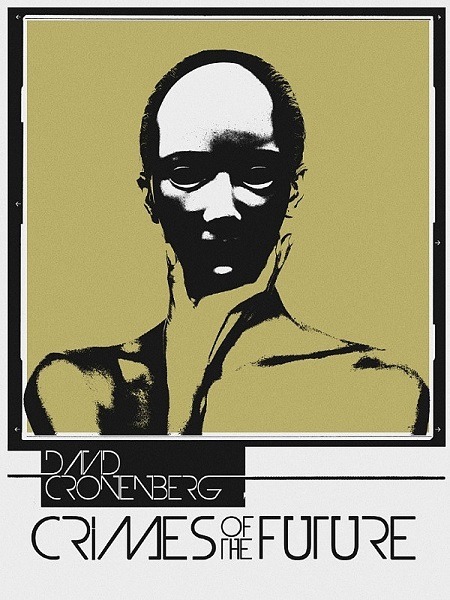Canada. 1970.
Crew
Director/Screenplay/Producer/Photography – David Cronenberg. Production Company – Emergent Films.
Cast
Ronald Mlodzik (Adrian Tripod), Jon Lidolt, Tania Zolty, Jack Messinger, Paul Mulholland, William Haslam, William Poolman, Stefen Czernecki, Ray Woodley, Kaspars Dzeguze, Iain Ewing, Brian Linehan, Leland Richard, Norman Snider, Stephen Zeifman, William Wine, Bruce Martin, Don Owen, Udo Kasemets, Sheldon Cohen, George Gibbins, Rafe MacPherson, Count Aus von Blicke)
Plot
It is in the future where a disorder known as Rouge’s Malady has killed off all women over pubertal age. Dr Adrian Tripod works for various institutes and laboratories where he observes the conditions that have emerged in the survivors, including random mutating organs and the production of a froth known as Rouge’s Foam that he and others like to lick. In one of his jobs, Tripod is drawn into an underground society where the members are proposing the impregnation of an uninfected five year-old girl for the preservation of the human race.
Crimes of the Future was the second feature-length film from cult Canadian director David Cronenberg. Prior to this, Cronenberg had made Stereo (1969). Both Stereo and Crimes of the Future are art films and played several film festivals during the day but are obscure and hard to find today. A few years after Crimes of the Future, Cronenberg had the commercial hit of Shivers/They Came from Within (1975) and quickly became a genre favourite with the likes of Rabid (1976), The Brood (1979), Scanners (1981), Videodrome (1983), The Dead Zone (1983), The Fly (1986) and Dead Ringers (1988). In the 1990s and beyond, he has largely abandoned easy pigeonholing as a genre director with the likes of Naked Lunch (1991), M. Butterfly (1993), Crash (1996), eXistenZ (1999), Spider (2002), A History of Violence (2005), Eastern Promises (2007), A Dangerous Method (2011), Cosmopolis (2012) and Maps to the Stars (2014).
These early films, made when Cronenberg was only in his twenties, have a completely WTF aspect to them. Before he made Shivers, you get the impression that Cronenberg was intending to head along a career path making arthouse films. The title has tended to have Crimes of the Future reviewed as a science-fiction film, which it certainly is, but its adherence is more to the surrealist tradition than classical science-fiction cinema. Cronenberg’s subsequent horror films learned to root his wild ideas and perverse fascinations inside a narrative structure.
It is mind-boggling trying to get a grip on Crimes of the Future. Cronenberg has shot the entire film without dialogue, where the only sound is the narrator’s dry deadpan description of what is happening. This is something that Cronenberg also did on Stereo due to the fact that the camera he was using made too much noise. Thus in both films, the soundtrack has been dubbed in afterwards with Ronald Mlodzik describing everything in the mock tones of a dry scientific paper.

It is a strangely abstract and static film in terms of camera set-ups. Stereo was shot around the University of Scarborough where Cronenberg was a student. Similarly, Crimes of the Future has been shot in interiors and concrete structures, including the Ontario Science Centre, that give a distinctly modernist feel. All of this is accompanied by an exxxxxtemely experimental score of percussive effects, rattling, chirrupings and even birdcalls.
Crimes of the Future is a head-scratchingly strange film, filled with people engaged in obsessive alien behaviours. Indeed, it often feels like Cronenberg is foreseeing something of a Peter Greenaway film and its fixation with the documentation of weird rituals. In the opening moments, people in lab coats run after a man – when Ronald Mlodzik comes across them a little later, they are lying on the grass painting their fingernails. On the soundtrack, Mlodzik talks about Rouge’s Foam and then we see him creeping up the side of the bed of the man the lab assistants were running after earlier, taking some of the foam off the man’s chest and then excitedly licking it from his hand. The scenes at the Metaphysical Import/Export company contain an amusing little pantomime where Ronald Mlodzik goes around and shows employees bags of socks and underwear and they place them out on the floor in patterns.
People often miss the incredibly dry sense of humour in Cronenberg’s films. Here Cronenberg has a great deal of fun parodying academic doublespeak and coming up with the names of strange-sounding institutions that Ronald Mlodzik keeps passing through to be hired – the House of Skin, the Oceanic Podiatry Group, the Institute of Neo-Venereal Diseases, Metaphysical Import/Export, the Gynaecological Research Foundation. There is a marvellously dry piece of pseudo-academic pomposity as Ronald Mlodzik narrates: “The technique I am to attempt is an evocation of the genetic history of the feet. That is – tentacles, lobed fins, flippers and so on. By these, and other means more esoteric, I am to reverse the psychic relapse, now too common, which can occur under intense genetic pressure. I am thereby to encourage patients to bear the burden of a suddenly alien gravity – to walk, for example, when they would prefer to revert to more primitive oceanic forms.” As this is going on on the soundtrack, we see before us a silent mime with Mlodzik and a patient out in the open on the grass, the man twisting Mlodzik’s feet, and then they changing positions and Mlodzik placing his forehead reverentially against the man’s boot, which causes him to erupt in agony. This scene dissolves into a bizarre little drama as another man comes along and what seems like a lover’s jealous quarrel ensues as the new man shoos Mlodzik away and Mlodzik then goes off and finds another patient with webbed feet.

There are all the coolly detached lines in reverence of the scientific process and the weird fetish with bodily mutation and medical science that runs through almost all of David Cronenberg’s genre work. “His nurse says his disease is possibly a form of creative cancer,” says Ronald Mlodzik of one patient. This is followed by an hilarious little piece of narration about the colleague whose body keeps manifesting strange organs of unknown purpose that are then removed, only for the disease to drive the patient to break into the specimen room to steal the organs back.
Of course, the ending the film arrives at, where the only solution to save humanity seems to be the impregnation of a five year-old girl is fairly way out. It caused a modest degree of controversy at the time, with Crimes of the Future receiving various reviews calling it ‘distasteful’. That was also a time when the issue of paedophilia was not as big a moral panic as it is today – just try and imagine Crimes of the Future being made in the 2000s where the likely upshot would be calls for its banning and every distributor and theatrical chain refusing to show it.
Cronenberg later made another film with the same title Crimes of the Future (2022). Although both films are unrelated, they share similar themes about the body producing new organs and of a radical underground wanting to experiment on a child.
David Cronenberg’s other films are:– Stereo (1969), a little-seen film about psychic powers experiments; Shivers/They Came from Within (1975) about sexual fetish inducing parasites; Rabid (1977) about a vampiric skin graft; The Brood (1979) about experimental psycho-therapies; Fast Company (1979), a non-genre film about car racing; Scanners (1981), a film about psychic powers; Videodrome (1983) about reality-manipulating tv; The Dead Zone (1983), his adaptation of the Stephen King novel about precognition; The Fly (1986), his remake of the 1950s film; Dead Ringers (1988) about two disturbed twin gynaecologists; Naked Lunch (1991), his surreal adaptation of William S. Burroughs’ drug-hazed counter-culture novel; M. Butterfly (1993), a non-genre film about a Chinese spy who posed as a woman to seduce a British diplomat; Crash (1996), Cronenberg’s adaptation of J.G. Ballard’s novel about the eroticism of car crashes; eXistenZ (1999), a disappointing film about Virtual Reality; Spider (2002), a subjective film takes place inside the mind of a mentally ill man; the thriller A History of Violence (2005) about an assassin hiding from his past life; Eastern Promises (2007) about the Russian Mafia: A Dangerous Method (2011) about the early years of psychotherapy; Cosmopolis (2012), a surreal vision of near-future economic collapse; the dark Hollywood film Maps to the Stars (2014); Crimes of the Future (2022) set in a future world of surgical performance art; and The Shrouds (2024) about the development of a technology that places videocameras inside graves. Cronenberg has also made acting appearances in other people films including as a serial killer psychologist in Clive Barker’s Nightbreed (1990); a hitman in Gus Van Sant’s To Die For (1995); a Mafia head in Blood & Donuts (1995); a member of a hospital board of governors in the medical thriller Extreme Measures (1996); as a gas company exec in Don McKellar’s excellent end of the world drama Last Night (1998); and a priest in the serial killer thriller Resurrection (1999); and a victim in the Friday the 13th film Jason X (2001).
Trailer here


